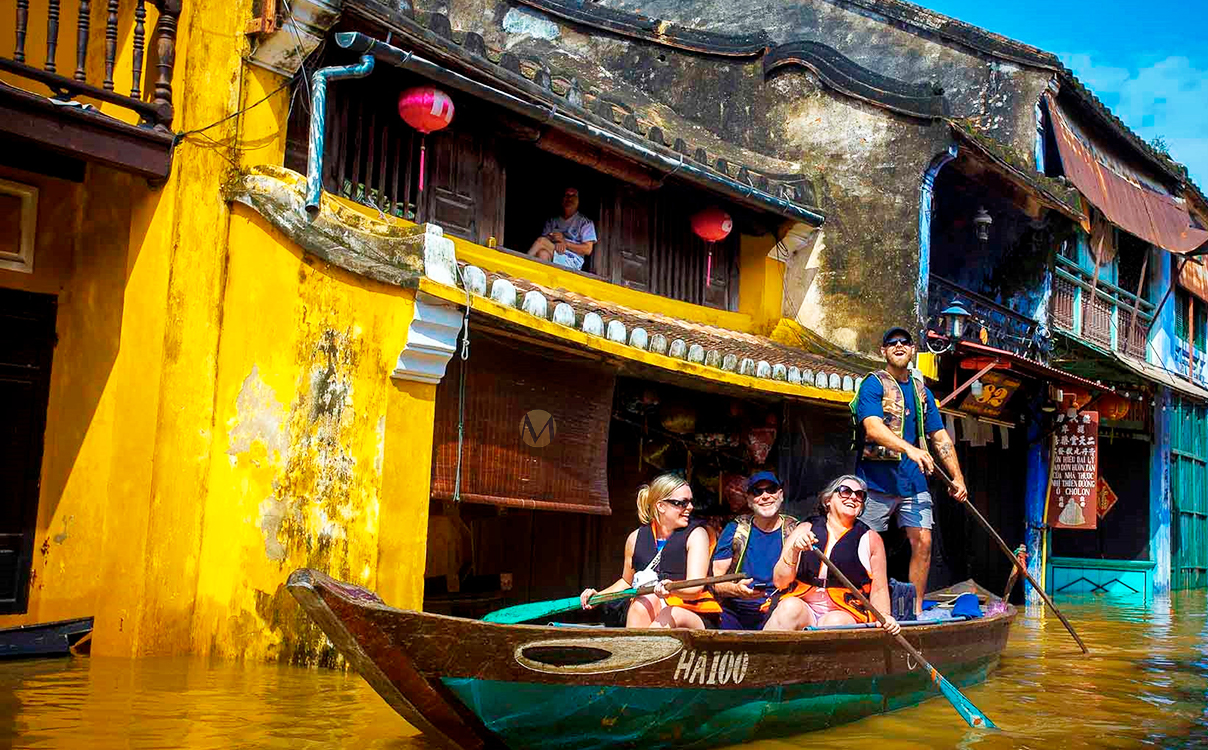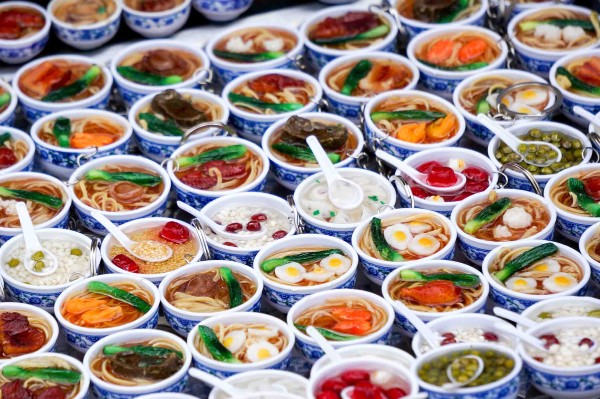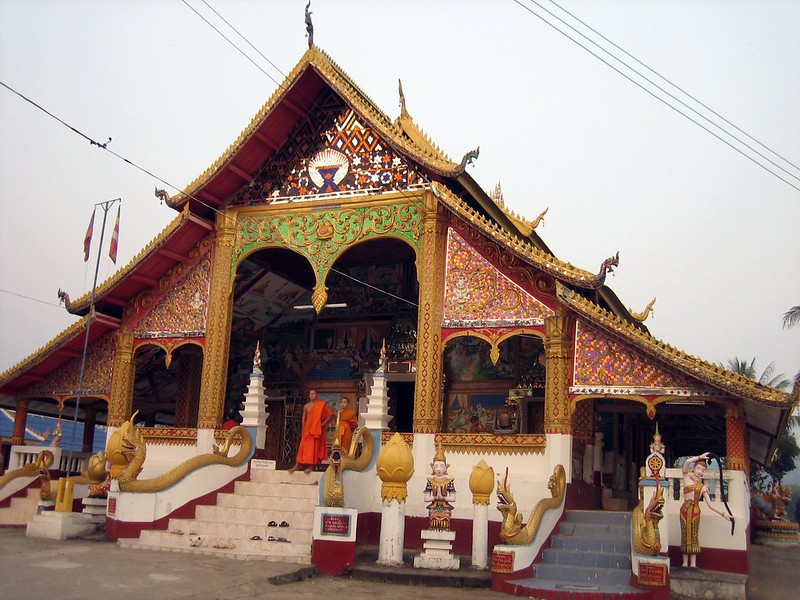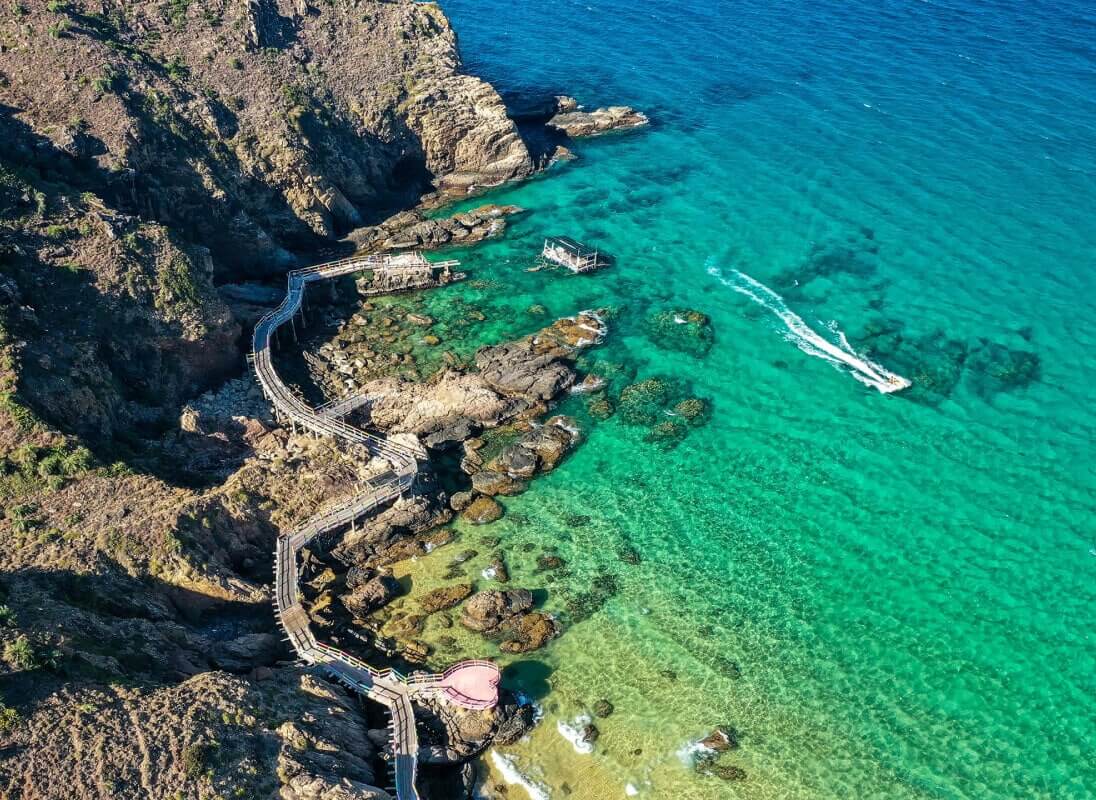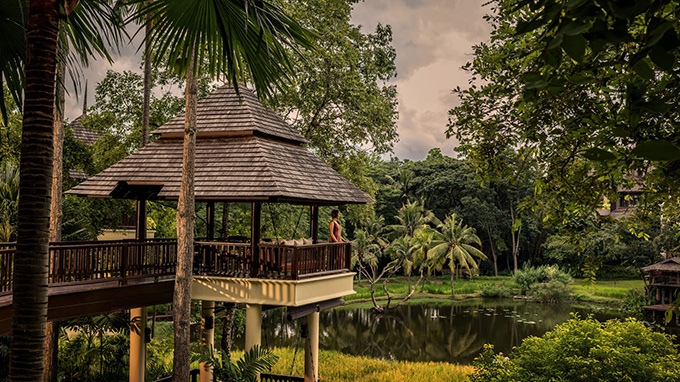As you stroll through the ancient citadel of Hue, remnants of its turbulent history are visible in the pockmarked walkways, scarred by helicopter gunfire. From its 19th-century heyday as the capital under the Nguyen Dynasty to its pivotal role in the 1968 Tet Offensive, Hue carries the weight of Vietnam’s history. Today, while the city embraces its past, it has also become a center for Vietnamese art, culture, and cuisine.
Hue was first settled by the Cham people and later influenced by Dutch, Portuguese, and French visitors. However, it was during the Nguyen Dynasty’s reign, under French protection, that the city’s character truly developed. The Nguyens ruled from 1802 until their fall in 1945, a period that saw the construction of the grand mausoleums that line the Perfume River.
These lavish tombs were often built at the expense of the common people, with taxes being raised to fund the projects. Exploring these tombs by bicycle, car, or boat is a must. Some, like Emperor Minh Mang’s 19th-century complex, feature gardens and pavilions, while others, like Khai Dinh’s tomb, reflect 20th-century innovations such as cement construction.
Though the citadel was largely destroyed during the Viet Minh takeover in 1947 and the Tet Offensive, much has been rebuilt or restored. Crossing the moat and stepping through its fortifications, you’ll find temples, palaces, and libraries, all carefully designed based on ancient Oriental philosophy. Visiting with a knowledgeable guide is highly recommended for a deeper understanding of the site.
Local artists and craftsmen were essential in restoring much of Hue’s historical sites. With growing appreciation for traditional art, Hue’s UNESCO World Heritage status has further fueled this revival. You can explore private art collections, try your hand at bamboo paper art (trucchi), or learn about lacquer paintings.
Unlike the bustling cities of Ho Chi Minh City or Hanoi, Hue remains small and surrounded by lush residential areas. The traditional single-storey homes, similar to the palaces within the citadel, reflect the city’s cultural and architectural uniqueness. Many of these homes once housed families close to the royal family and are surrounded by gardens filled with tropical fruits and herbs. You can even take cooking classes in these garden homes, learning to prepare dishes like fresh fig salad or Hue’s famously spicy food.
Known for its culinary innovations, Hue is home to some of Vietnam’s most iconic dishes. While walking through the city, be sure to try banh khoai, golden rice pancakes, or banh loc goi, steamed dumplings filled with shrimp or pork.
Further north, near the border between North and South Vietnam, the Vinh Moc Tunnels provide a sobering reminder of the war. Built to protect the village from bombings, these tunnels feature three levels that once housed kitchens, schools, and living quarters. Unlike the Cu Chi Tunnels, these tunnels have remained relatively untouched, offering an authentic experience of life during the war.
Best Time to Visit Hue:
Hue experiences two distinct seasons: wet and dry. The best time to visit is during the dry season, from February to August, with the most pleasant weather in the early months when temperatures hover around 25°C (77°F). From June, the heat intensifies, and the city sees an influx of domestic tourists. The wet season begins in September, and while it can be a quieter time to visit, it’s also the rainy season, with the heaviest rains falling in October and November.
Speak to one of our Concierge specialists

With a tailor-made trip to Hue, you can customize your itinerary to suit your interests and preferences. Let Myway help you to create your perfect itinerary.
Our guides passionately explore Vietnam, seeking unique experiences, hidden gems, and gathering updated intel on top guides, hotels, restaurants, and best transport.


